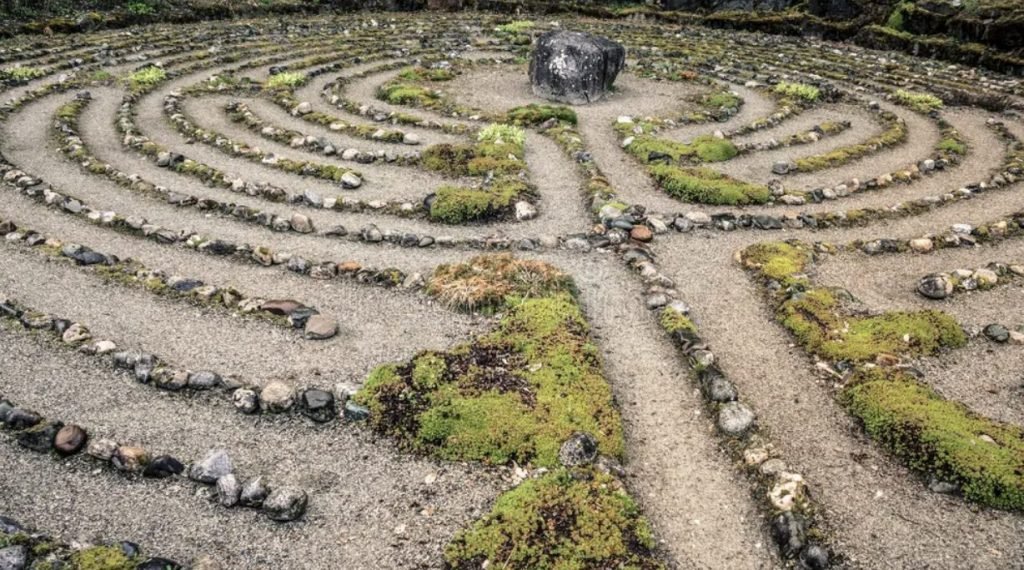Find or Start a Spiritual Commune
Looking for community in a spiritual commune? Build or find a community to live in!
Many religious communities have attempted radical types of sharing, while others have maintained more individual resources and privacy. Often the motivation for voluntarily entering communal life is to counter the self-serving and more impulsive elements of human nature. Find others who share a conviction about the possibility of living peacefully with other seekers in a social context in which all will flourish.
How to create a religious or spiritual commune
- Learn by experience. Live in one or more established religious or spiritual communities. IC.org lists a large variety of religious or spiritually oriented residential intentional communities worldwide.
- Indicate your community type in your profile. In the Community Type category of profile questions, select “spiritual commune.”
- Indicate your religious or spiritual focus in your profile. The Spirituality & Religion category of profile questions includes a question labeled “Practice-based IC.” Even if you envision a group culture that is fairly easygoing and friendly, check the first option “Mandate of adherence to shared religious beliefs and practices.” This will indicate that your intent is to establish a religious or spiritually-focused IC.
- Be open about yourself. To help members with similar ideals to know if they are a good match, complete all the profile questions.
- Post a description of your group. ICmatch helps you find people with similar beliefs and invite others to join your forming group. See the Team Up page. Some of your first members may become your leadership team.
9
Attributes of good leadership for a spiritual commune
- Continue your own personal growth work. If your leadership team doesn’t think it needs ongoing practice, its shadow side may be the downfall of your attempt at community.
- Read about the many failed religious or spiritual ICs. This could give you a better chance of avoiding known pitfalls. Consider taking “safe church” training offered by a variety of organizations. Many seemingly novel approaches you will likely find have proven unfruitful in multiple past attempts.
- Clearly define the heritage of your ideals. Some spiritual communes or religious communities are established with the authority of an established religious order with a recognized lineage. Examples are ashrams, kibbutzim, convents, and monasteries. Every beginning community does well to channel some of its initial enthusiasm into time-tested formalities, rather than waste it in pursuing one novel approach after another. Why make predictable mistakes when your predecessors have taken the time to describe finely tuned best practices? Without a clear foundation, your experiment may do more harm than good. The failure of your efforts, small or large, might reflect on that tradition.
- Seek advisors. You may be attempting to create a container for practice that relates to a recognized lineage of religious or philosophical order. If so, it honors the tradition to do so with the sanction and guidance of an elder from that community. You might choose a heretical elder or one with a long-standing allegiance to a basis of the tradition. Either way, make sure your heritage and elders are recognized in your founding documents, to give members clarity now and into the future.
- Create a leadership team that shares power. If you think you alone have all the answers, you’ll fall into the pattern of cult-like communities. If you share decisions with a handful of others, but only when they agree with you, you’re not sharing power. Share the decision-making in a spiritual commune with many members, and be transparent!
- Develop a funding stream. Some communities offer group or individual retreats. You may write grants to determine whether you can secure a consistent benefactor. You may find it useful to register as a church (see Resources section below) to offer tax deduction receipts to donors. As a non-profit you can provide receipts even for donations of food and a variety of goods and services. Alternately, you may choose to attract self-employed or independently wealthy members.
- Get clear on membership requirements. State in writing what financial contributions are needed from individual members in order for your IC to sustain itself. Many income-sharing communities (often called communes) require a number of work hours from members and in return provide for members’ basic physical needs. It’s important to be explicit about all requirements, even the subtle ones that could be said to simply be cultural norms. To leave it nebulous invites social loafing, which the more diligent members will soon begin to resent. Even among families, chores and other types of contribution are often renegotiated. Those that ignore this necessity put themselves on the path of the estimated 90% of overly-idealistic groups that fail to achieve even the most basic cohesion as a community (Christian, 2003).
- Provide ritual. There is a reason you are all living in a spiritual community after all! Co-create transformational events blending work and play. Think Burning Man and other modern arts festivals. Events can remain affordable if they incorporate work sessions where participants can be coordinated to complete needed jobs. Many enjoy structured group work where participants learn skills and become familiar with each other, followed by feasts or displays of artistry. You may choose to have some of these open to the public. That way, they become cohesion-building traditions as well as potentially attracting new members.
- Create a path for membership. The requirements and decision process at your spiritual commune should be clear and time-limited. This helps you be fair to those hoping to join. Allow them to move on if they aren’t a good fit, rather than leading them on endlessly with the prospect of acceptance into the inner circle. You might find it hard to deliver the news of them not making the cut, but as Brene Brown says, “clear is kind.” If you proceed according to the known steps and timelines, they won’t have reason to feel unfairly treated.
Reference: Christian, D. L. (2003). Creating a life together: Practical tools to grow ecovillages and intentional communities. New Society.
Examples
The Foundation for Intentional Communities maintains a listing of self-designated spiritual and religious residential intentional communities.
The Monastic Academy with sites in Vermont, California, and Ontario is a “modern Buddhist” residential intentional community open to outsiders joining. They offer retreats and extended stays as self-designed visits.
The Bruderhof Community, a Christian organization sharing its wealth in common, has 3000 members living in small communal settlements across five continents.
Koinonia Farm in Georgia operates successfully as an income-sharing community founded on Christian principles and tradition.
Catholic Worker lists Christian service communities.
Hakhel lists Jewish intentional communities.
Consultants for Spiritual Communes
ICmatch can connect you with consultants who have deep experience in projects and living environments that thrive on close, sustained cooperation. These professionals are experts at guiding others through the unique opportunities and challenges of communal living.
The consultants listed below have subscribed to be featured on this page. For even more consultants with interest and expertise in this type of community, visit the consultants page linked in the header.
Members interested in Spiritual Communes
ICmatch can connect you with communitarians who have similar interests and values. The members listed below have subscribed to be featured on this page. For even more members with interest in this type of community, visit the Match for Free page linked in the header.
Resources
The Nurturing Communities Network lists Christian intentional communities and offers mentoring to new communities.
You may find it advantageous to register as a formal church. The fair housing law does not apply to churches, to accommodate traditions such as gender-segregated housing and to not be seen as “discriminating” based on religion.
Some consultants recommend IRC 508(c)(1)(a) tax status, but this approach has limiting aspects too.
Beware of cults. Know the warning signs, and avoid becoming cultish.
The Emerge podcast by Daniel Thorson, member of a Buddhist intentional community, features somewhat esoteric and spiritual discussions. It focuses on creating a new culture and sustainable lifestyles.
One intentional community with bylaws established in 1996 shares its religious statement that is part of its legal founding documents.
Social justice work: If this is a core value of your community, you may find inspiration here.




